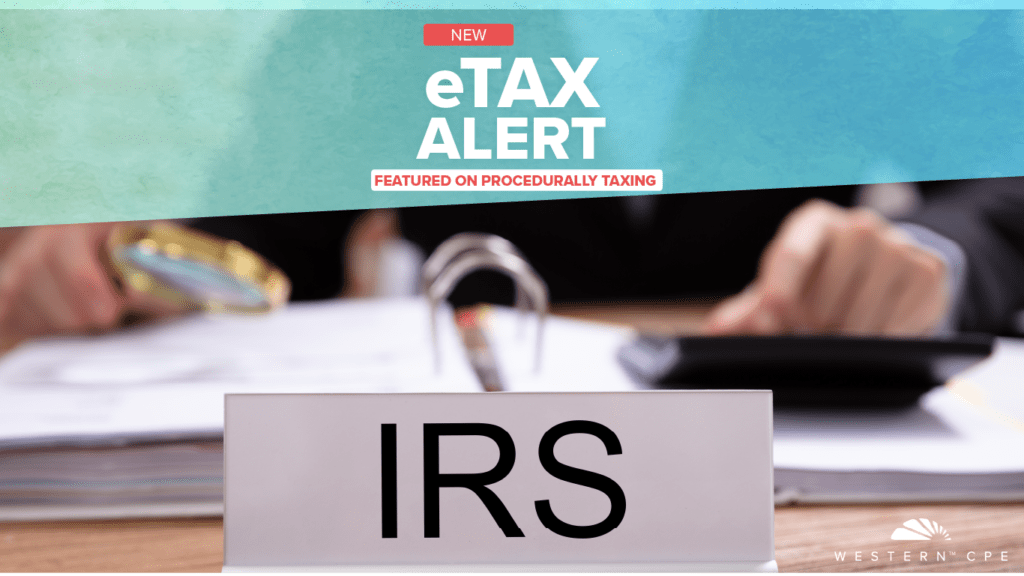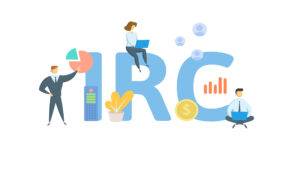

This article by Jessica L. Jeane, J.D. originally appeared in Procedurally Taxing.
It likely comes as no surprise to readers that the IRS isn’t winning any awards in the digital services realm. A few old adages come to mind when thinking about the long-awaited improvement needed for the IRS’s digital communications or more formally digital tax administration services. Maybe something along the lines of: there’s no time like the present, seize the day, or even in the words of Elvis Presley, “it’s now or never.”
Okay, the last one is probably a little dramatic, but the overarching point here is that now is the time for the IRS to enhance its digital communications tools for taxpayers and tax professionals. But don’t take my word for it, just ask the National Taxpayer Advocate (NTA) Erin M. Collins.
Seize the Day (Or the Funding)
Indeed, the need for improved digital services in both the areas of customer service and compliance has been a consistent concern of Collins’. And she again reiterates the importance of ramping up these digital communications efforts in the Online Access for Taxpayers and Tax Professionals section of the 2022 NTA Annual Report to Congress released earlier this month.
In fact, of all the steps the IRS could take to improve the taxpayer experience, creating robust online accounts should be the highest priority and will prove the most transformational, according to Collins. “Providing tax information and services accessible through a robust online account and seamlessly integrated digital communication tools are essential for taxpayers, their representatives, and IRS employees,” she wrote.
And why is now the time for the IRS to expand its digital services, you may ask. I’ll give you 5 billion reasons. I won’t, but the IRS’s recent funding boost of nearly $80 billion under the Inflation Reduction Act (IRA) (P.L. 117-169) serves as a good one. Specifically, the IRA provided $4.74 billion to the IRS for business systems modernization.
As Collins noted, most taxpayers have been conducting business with various financial institutions digitally for at least the last two decades, and it’s high time the IRS offers online accounts with comparable functionality. Importantly, doing so would eliminate the need for calling the IRS (good luck there) or mailing paper correspondence (the IRS’s Achilles heel).
In that vein, the IRS has been working on (or working toward working on) expanding its digital services for years, and most recently in accordance with statutory requirements since 2019 pursuant to the Taxpayer First Act (TFA) (P.L. 116-25). Under the TFA, the IRS was required to provide Congress a report on its “comprehensive customer service strategy.” And starting on page 41 of the TFA Report to Congress (2021), the IRS details its goals for expanding digital services. Yet as Caleb Smith noted in his Procedurally Taxing post last year, the report contains a lot of aspirational buzzwords rather than a clear path forward. And what’s more, fast forward over two years later (okay, and a pandemic), the IRS is missing the mark. To the IRS’s credit, however, it has made some meaningful advancements in its digital services lineup over the last few years, but it still has a long way to go. Just take a look at the Treasury Inspector General for Tax Administration’s (TIGTA) audit report released last November detailing its less than stellar review of the IRS’s Taxpayer Digital Communications (TDC) program. In case you haven’t read it, I’ll save you the suspense and tell you that TIGTA weighed and measured the IRS’s implementation of the TDC program and it was found wanting.
Generally, the TDC program is intended to enable taxpayers and practitioners to better communicate and securely share information with the IRS. Best laid plans, am I right? Except in this case, the plans weren’t laid out too well, according to TIGTA’s findings, which note that the IRS failed to proactively identify IRS functions or operations for which digital communication may have provided sizable benefits for both taxpayers and IRS employees. TIGTA’s evaluation further concludes that the IRS’s management of the TDC program was more focused on completing various program installations than actually maximizing the IRS’s ability to communicate digitally with taxpayers.
Tax Pros’ Efforts are Instrumental in Effective Tax Administration
While we often focus on the taxpayer implications of various tax procedure and administration issues, it is important to note the impact on the tax professional, as well as not discount that impact’s effect on the taxpayer. Plainly put, the important role tax professionals play in effective tax administration and compliance while minimizing taxpayer burdens cannot be overstated.
And as our tax pros know better than anyone, and let’s just call a spade a spade, communicating with the IRS ain’t easy. During 2022, the IRS answered only 11 percent of calls – an “all-time low.” And 52 percent of correspondence currently remains unprocessed in the IRS’s backlog of inventory that goes beyond standard processing timeframes.
“Taxpayers or their representatives wanting to interact online need and deserve quality service options and quick responses from the IRS,” Collins wrote in the 2022 NTA Annual Report to Congress. “Today, most taxpayers and tax professionals can’t depend on receiving either, causing dissatisfaction that can lead to distrust in tax administration.”
In a solid effort to increase its digital tax services, the IRS rolled out the Tax Pro Account feature in 2021, which at the time was called a “groundbreaking step” by former Commissioner Chuck Rettig. “This is the first, basic step toward a more fully integrated digital tax system that will benefit taxpayers, tax professionals, and the IRS,” Rettig said.
And while the Tax Pro Account certainly received a warm welcome from practitioners, it hasn’t lived up to industry expectations. In fact, Collins refers to its name as a “misnomer,” because it offers only very basic functions for tax pros, such as digitally signing and transmitting a Form 2848, Power of Attorney and Declaration of Representative.
What it fails to provide, however, is secure messaging and the ability to upload documents. According to Collins, needed upgrades to the Tax Pro Account should include practitioners’ ability to:
- view all clients’ Online Accounts through their Tax Pro Account portal;
- view all changes and new information posted in the taxpayer’s account;
- view all notices and letters mailed to the taxpayer;
- view the status of pending refunds and requests;
- view information on digital payment options;
- upload requested documents relating to notices or correspondence on a tax issue; and
- send messages to an IRS employee working their client’s case.

Good News
While the digital services situation remains dreary today, the good news is that the IRS not only states that it is committed to expanding digital services, it now has the funding to do it. “The Inflation Reduction Act affords the IRS the funding and opportunity to implement numerous improvements to the online services offered to taxpayers and tax professionals,” the IRS said in its comments included within Collins’ report.
Additionally, the IRS said it is planning expansion of certain digital services available through the Tax Pro Account and has developed a list of enhanced features based directly on feedback from the tax professional community. We’ll cheers to that.








